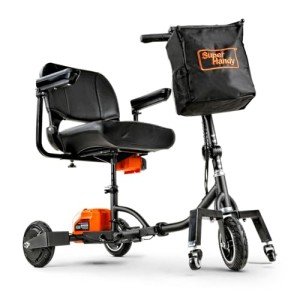Understanding Mobility Aids: Enhancing Independence and Quality of Life
As society continues to age and people increasingly seek methods to preserve self-reliance, the demand for mobility aids has never been more relevant. Mobility aids, which incorporate a range of devices developed to assist people with strolling or moving, play a vital function in promoting mobility, enhancing safety, and improving total lifestyle. This blog site post will explore the numerous kinds of mobility aids, their benefits, considerations for choice, and address some often asked questions.
Kinds Of Mobility Aids
Various mobility aids are readily available, each developed to address specific needs. The following table sums up some of the most typical types of mobility aids and their functions.
| Type of Mobility Aid | Description | Best Suited For | Key Features |
|---|---|---|---|
| Walking canes | A portable stick offering assistance and balance. | Individuals who require very little help. | Light-weight, portable, adjustable height. |
| Walkers | Four-legged frames offering stability. | Those needing considerable assistance while strolling. | Foldable, some with wheels, included safety features. |
| Rollators | Wheeled walkers with a seat for resting. | People requiring mobility with the option to rest. | Brakes, baskets for personal products, adjustable height. |
| Wheelchairs | Chairs with wheels for individuals with restricted mobility. | Those unable to walk or requiring substantial support. | Manual or powered options, customizable seating. |
| Scooters | Motorized devices for bigger distances. | Individuals with restricted stamina however needing independence. | Different sizes and designs, frequently portable. |
| Crutches | Assistance devices placed under the arms or forearms. | Individuals recuperating from lower limb injuries. | Adjustable, lightweight, needs upper body strength. |
| Stairlifts | Mechanical devices for moving in between floors. | Users facing difficulties in multi-level homes. | Personalized for various staircases, automated. |
Advantages of Mobility Aids
Mobility aids offer a range of benefits that can considerably boost the lives of individuals dealing with mobility difficulties. Some significant advantages consist of:
- Increased Independence: Mobility aids empower individuals to move easily without counting on others for help, consequently improving their self-confidence and self-esteem.
- Enhanced Safety: Using mobility aids can minimize the risk of falls and injuries, particularly for older adults or those with balance problems.
- Improved Quality of Life: By assisting in mobility, people can participate in social activities, go to events, and delight in life more completely, adding to much better emotional and mental health.
- Rehab Support: After surgical treatment or injury, mobility aids offer needed assistance and stability, aiding in healing and rehab processes.
- Availability: Many mobility aids are designed to be used both inside and outdoors, ensuring that individuals can navigate different environments with ease.
Factors to Consider When Choosing Mobility Aids
Choosing the suitable mobility aid requires mindful factor to consider of a number of elements, consisting of:
| Factor | Considerations |
|---|---|
| User's Needs | Assess the level of mobility required; think about whether the user needs momentary or long-lasting assistance. |
| Physical Limitations | Assess the user's strength, balance, and coordination to identify the very best kind of aid. |
| Setting | Think about the main environments where the help will be used, such as home, outdoors, or particular surfaces. |
| Weight and Portability | Ensure that the chosen device is manageable regarding portability and storage, specifically for outdoor usage. |
| Budget | Mobility aids can be found in a variety of rates; consider insurance protection and offered funding options. |
| Adjustability | Select aids that can be changed for height and convenience to accommodate growth or altering requirements. |
Frequently Asked Questions About Mobility Aids
1. How do I know if I require a mobility help?
Lots of elements can signify the requirement for a mobility help, such as problem walking or balancing, fatigue while standing, or a recent surgery impacting mobility. Consulting with a healthcare specialist can supply guidance customized to private needs.
2. What kinds of mobility aids are covered by insurance?
Coverage differs between insurance companies, however many offer options for resilient medical devices, which normally includes wheelchairs, walkers, and some types of walking sticks. Contact watch this video for specific coverage info.
3. Can mobility aids be utilized outdoors?
Yes, lots of contemporary mobility aids are created for outside use. Rollators, scooters, and some walkers are equipped with features for stability and ease of use on various surface.
4. How do I preserve my mobility aid?
Regular maintenance includes inspecting for any wear and tear, guaranteeing that parts such as wheels, brakes, and frames are functioning properly, and cleaning the devices as needed. Following the producer's guidelines is important for safety.
5. Exists a danger of ending up being depending on mobility aids?
While some users might become reliant on mobility aids, they are designed to promote self-reliance and mobility. Slowly utilizing a mobility help can enhance confidence and help keep physical strength and coordination.
Mobility aids are indispensable tools that empower people to conquer physical difficulties, promoting independence and enhancing quality of life. By comprehending the different kinds of mobility aids offered, their advantages, and important elements for factor to consider, households and caregivers can make educated decisions that best meet the requirements of their loved ones. With the right assistance, those with mobility difficulties can lead satisfying and active lives, complimentary to explore the world around them.

